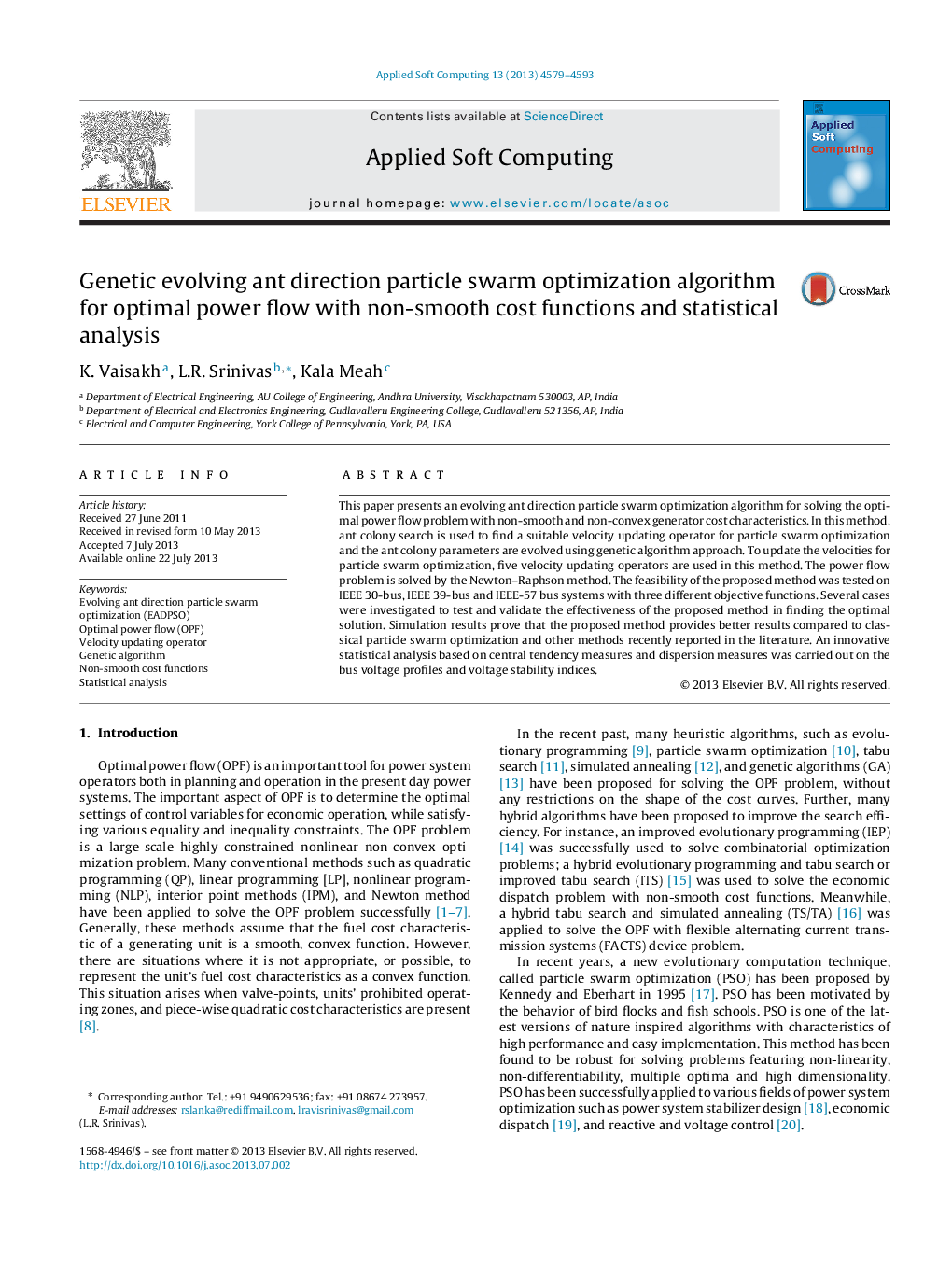| Article ID | Journal | Published Year | Pages | File Type |
|---|---|---|---|---|
| 495673 | Applied Soft Computing | 2013 | 15 Pages |
•Statistical evaluation for 20 test runs of PSO is added in the revision.•Flowchart and CPU time are added.•Statistical analysis is suppressed.•Missing legends and labels are provided.•References are provided in Journal's style.
This paper presents an evolving ant direction particle swarm optimization algorithm for solving the optimal power flow problem with non-smooth and non-convex generator cost characteristics. In this method, ant colony search is used to find a suitable velocity updating operator for particle swarm optimization and the ant colony parameters are evolved using genetic algorithm approach. To update the velocities for particle swarm optimization, five velocity updating operators are used in this method. The power flow problem is solved by the Newton–Raphson method. The feasibility of the proposed method was tested on IEEE 30-bus, IEEE 39-bus and IEEE-57 bus systems with three different objective functions. Several cases were investigated to test and validate the effectiveness of the proposed method in finding the optimal solution. Simulation results prove that the proposed method provides better results compared to classical particle swarm optimization and other methods recently reported in the literature. An innovative statistical analysis based on central tendency measures and dispersion measures was carried out on the bus voltage profiles and voltage stability indices.
Graphical abstractFlow chart of the proposed EADPSO algorithm.Figure optionsDownload full-size imageDownload as PowerPoint slide
